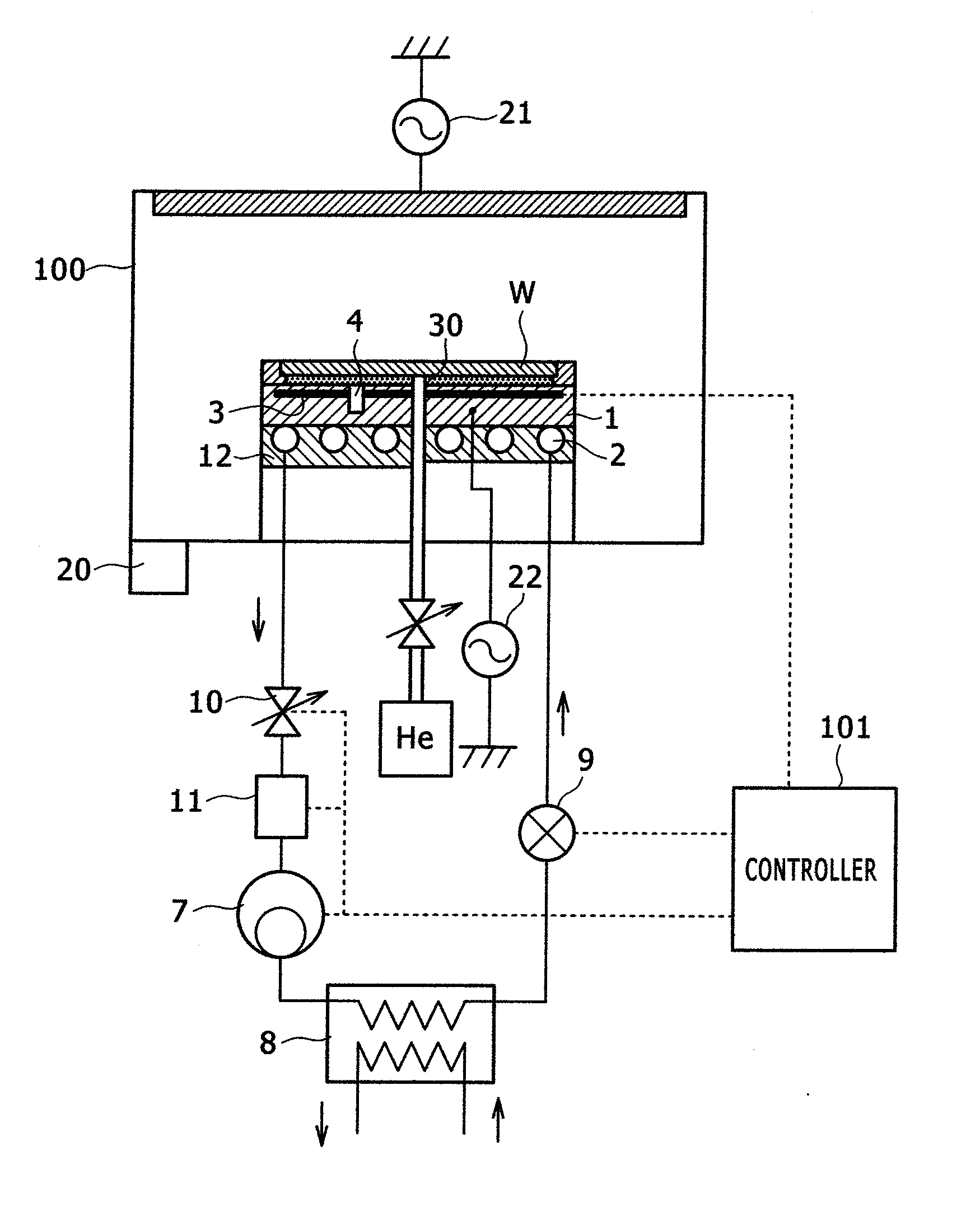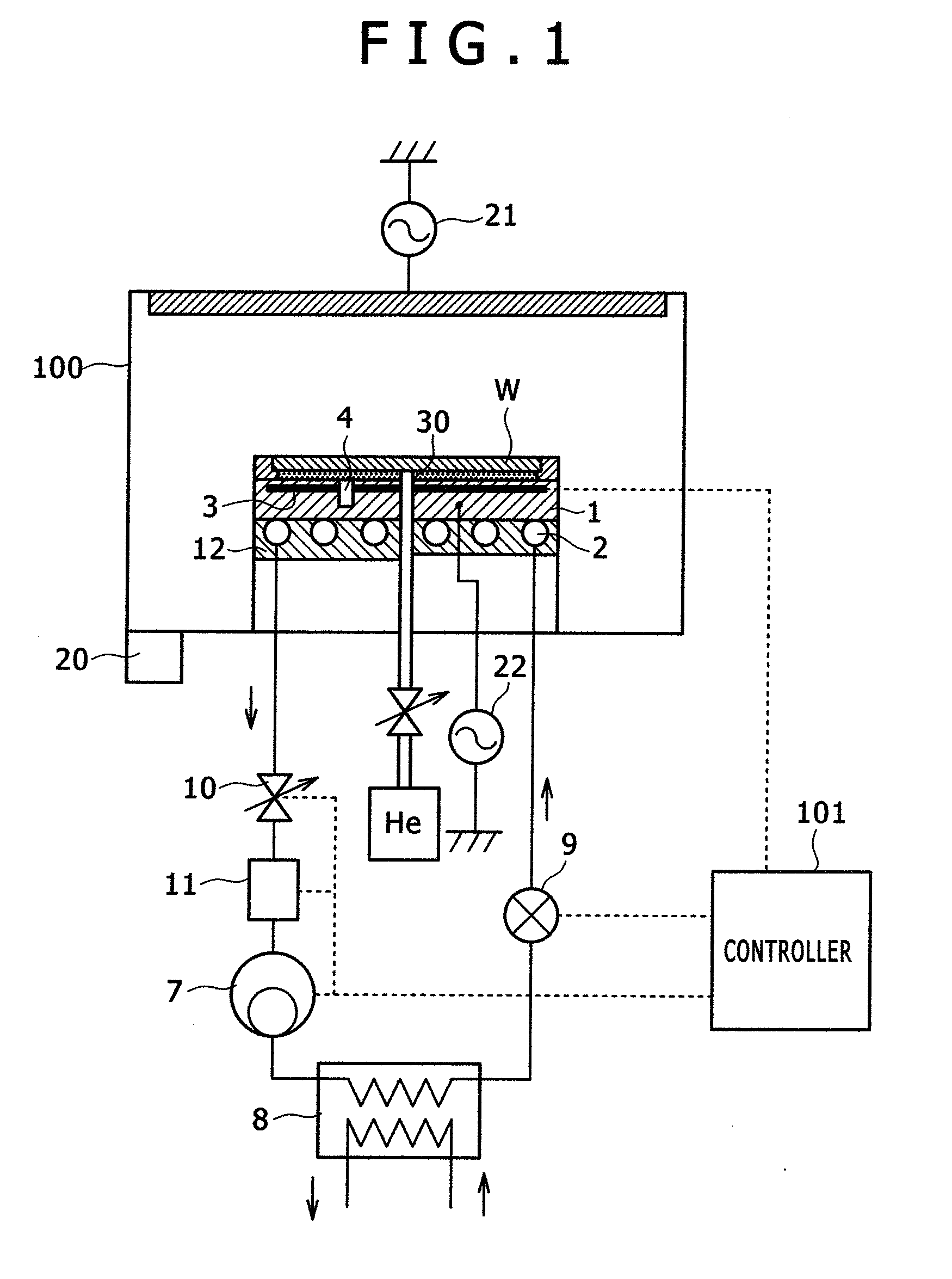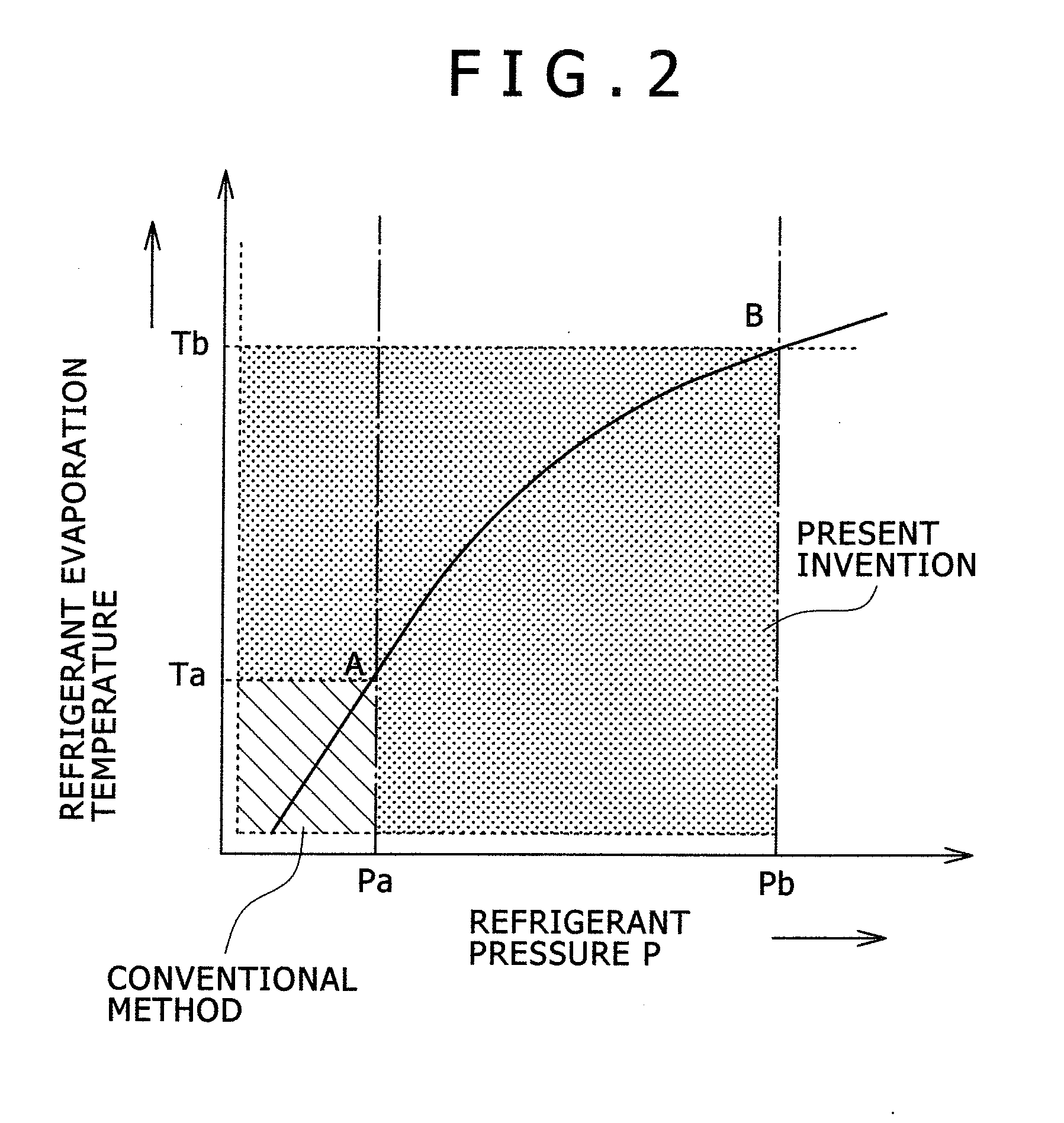Plasma processing apparatus
a processing apparatus and plasma technology, applied in the field of plasma processing apparatus, can solve the problems of direct expansion type temperature control unit for electrostatic adsorption electrode, limited refrigerant temperature control range, and inability to compress refrigerant, etc., to achieve high heat input, high wafer bias power, and high heat input
- Summary
- Abstract
- Description
- Claims
- Application Information
AI Technical Summary
Benefits of technology
Problems solved by technology
Method used
Image
Examples
first embodiment
[0039]FIG. 1 is a schematic diagram illustrating the configuration of a plasma processing apparatus having a temperature control unit according to a first embodiment of the present invention. The plasma processing apparatus having a temperature control unit has a processing chamber 100. The processing chamber 100 includes an electrostatic adsorption electrode 1 having an electrostatic adsorption insulation thin film on which a wafer W is to be mounted as a sample; an evacuation system 20 for evacuating the processing chamber 100; an antenna power supply 21 for applying high-frequency power for plasma generation to the processing chamber 100; a process gas supply system (not shown) for supplying a process gas for plasma generation to the processing chamber 100; a bias power supply 22 for applying high-frequency power for biasing to the electrostatic adsorption electrode 1; and a He gas supply system 30 for supplying a heat transfer gas to a gap between the electrostatic adsorption in...
second embodiment
[0047]The plasma processing apparatus having a temperature control unit according to a second embodiment will now be described with reference to FIGS. 3A to 3C, 4A, and 4B. The second embodiment assumes that the plasma processing apparatus is configured as shown in FIG. 1.
[0048]FIGS. 3A to 3C show typical refrigerant pressure control operations according to the present embodiment, and assumes that Pa<Pb<Pc. FIGS. 4A and 4B are Mollier diagrams illustrating the direct expansion type refrigeration cycle.
[0049]First of all, a control operation performed to adjust the temperature of the electrostatic adsorption electrode 1 to a medium- or low-temperature region will be described with reference to FIG. 3A and FIG. 4A. At first, direct expansion type refrigeration cycle characteristics (a), which are shown in FIG. 3A, will be described. The refrigerant is compressed by the compressor 7 to obtain a high-temperature liquid refrigerant (step 1). The condenser 8 provides air cooling or water ...
third embodiment
[0056]A third embodiment of the present invention will now be described with reference to FIGS. 5A to 5D. The third embodiment is obtained by modifying a thin-walled cylindrical flow path structure of the plasma processing apparatus having a temperature control unit according to the first embodiment. In the direct expansion type refrigeration cycle, the evaporation temperature can be controlled at 1-second intervals by adjusting the refrigerant pressure. When these characteristics are to be used to exercise high-speed control over the wafer temperature, it is necessary to reduce the heat transfer loss between the wafer W and refrigerant flow path 2. In other words, it is necessary to decrease the heat capacity of the electrostatic adsorption electrode 1 on which the wafer W is to be mounted. It is conceivable that the heat capacity of the electrostatic adsorption electrode 1 may be decreased, for instance, by reducing its mass or by changing its constituent material to a low-heat-ca...
PUM
| Property | Measurement | Unit |
|---|---|---|
| pressure Pb | aaaaa | aaaaa |
| refrigerant temperature Tb | aaaaa | aaaaa |
| refrigerant temperature Tb | aaaaa | aaaaa |
Abstract
Description
Claims
Application Information
 Login to View More
Login to View More - R&D
- Intellectual Property
- Life Sciences
- Materials
- Tech Scout
- Unparalleled Data Quality
- Higher Quality Content
- 60% Fewer Hallucinations
Browse by: Latest US Patents, China's latest patents, Technical Efficacy Thesaurus, Application Domain, Technology Topic, Popular Technical Reports.
© 2025 PatSnap. All rights reserved.Legal|Privacy policy|Modern Slavery Act Transparency Statement|Sitemap|About US| Contact US: help@patsnap.com



